Caring for LIFE is an extensive online training curriculum teaching Direct Support Professionals how to serve seniors and people with disabilities. Learn more about Caring for LIFE through the following topics:
- Overview of Caring for LIFE
- New Employee Orientation Currriculum: Year 1
- Refresher Articles and Videos: Year 2 and beyond
- Mental Health Article Library: Seasoned DSPs
- Compliance with State of MN Statutes 245A and 245D
Overview of Caring for LIFE
New Employee Orientation Curriculum: Year 1
 1. Do No Harm (1.5 hours)
1. Do No Harm (1.5 hours)
In Do No Harm, DSPs will learn:
- Why it’s important to protect the people you support from harm. This is also known as maltreatment.
- Who is considered a “vulnerable adult” or a minor child.
- About your responsibilities to report suspected harm and the consequences of not reporting your suspicions.
- Common types of maltreatment.
- Tips for recognizing maltreatment and what to do about it.
- The information you will need to provide when making a report.
 2. Providing Person-Centered Planning (1.5 hours)
2. Providing Person-Centered Planning (1.5 hours)
In Providing Person-Centered Planning, DSPs will learn:
- About the concept of person-centered planning and how it applies to the way that direct support services are provided.
- Why it is important to provide services that reflect the individual’s needs, preferences and goals.
- About self-determination and how it impacts the way support services are provided.
- Ways to focus on the person receiving services while providing support and recognizing nonverbal cues.
 3. What to Do in an Emergency (2 hours)
3. What to Do in an Emergency (2 hours)
In What to Do in an Emergency, DSPs will learn:
- How to respond effectively when faced with an incident involving the people you are supporting.
- Ways to manage risks while encouraging the people you support to be as independent as possible.
- When to call 911 for medical, fire or police assistance.
- What to do in a weather emergency.
- How to prepare for natural disasters and what to do immediately after.
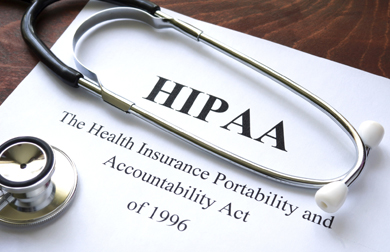 4. Rights and Responsibilities (1.25 hours)
4. Rights and Responsibilities (1.25 hours)
In Rights and Responsibilities, DSPs will learn:
- About data privacy.
- About the Health Information Portability and Accountability Act (HIPAA) and HIPAA Privacy Rules.
- How privacy and protection of personal information apply to people who receive support services.
- About your HIPAA responsibilities as a member of an individual’s care team.
- About self-determination and the rights of people who receive support services.
- How these rights apply in real-life situations.
- Creative problem-solving techniques.
5. Medication Basics (1.25 hours)
 In Medication Basics, DSPs will learn:
In Medication Basics, DSPs will learn:
- About the role that direct support services providers can play in supporting a person’s medication needs.
- The basic types and forms of medication.
- How to read over-the-counter and prescription medication labels.
- About common side effects and drug interactions that you should be aware of.
- The signs of overdose, severe allergic reactions and other serious complications.
- Simple safety precautions and tips for using, storing and disposing of medications safely.
- Where to go for help.
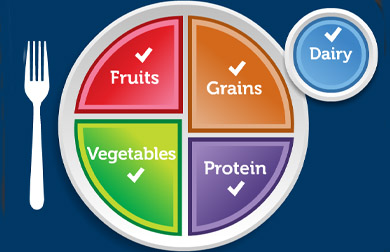 6. Ensuring Wellness, Health and Safety (1.5 hours)
6. Ensuring Wellness, Health and Safety (1.5 hours)
In Ensuring Wellness, Health and Safety, DSPs will learn:
- About the concept of wellness and some of the things that contribute to it.
- About the role you play in helping the people you support stay safe and healthy.
- The connection between wellness and a healthy diet and exercise.
- Basic information about hygiene and grooming.
- Basic information about critical body systems and symptoms of illness.
- What to do if you suspect the person you are supporting may be ill.
- About the importance of personal choice and the right to refuse treatment.
- Why it is important to document and report your observations.
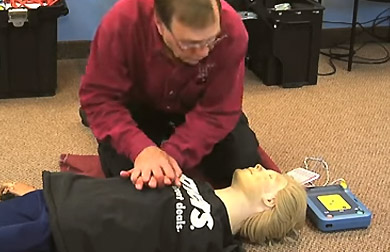 7. CPR and First Aid Basics (30 minutes)
7. CPR and First Aid Basics (30 minutes)
In CPR and First Aid Basics, DSPs will learn:
- About the signs of a heart attack.
- How to provide CPR.
- How to recognize and respond to common medical emergencies.
- How to provide basic first aid.
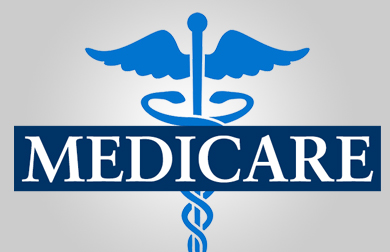 8. Preventing Insurance Waste, Abuse and Fraud (1.5 hours)
8. Preventing Insurance Waste, Abuse and Fraud (1.5 hours)
In Preventing Insurance Waste, Abuse and Fraud, DSPs will learn:
- About some of the insurance programs that pay for direct support services.
- About the serious problem of insurance waste, abuse and fraud.
- About some of the laws that regulate federally-funded insurance programs.
- About the serious legal consequences for committing insurance waste, abuse or fraud.
- About the role direct support service providers play in recognizing and preventing insurance waste, abuse and fraud.
- What to do if you suspect that insurance waste, abuse or fraud is occurring.
 9. Importance of Documentation (15 minutes)
9. Importance of Documentation (15 minutes)
In Importance of Documentation, DSPs will learn:
- Why it’s important to maintain accurate records and complete paperwork on time.
- How the information you provide may be used.
- Practical tips for completing paperwork so you can work more efficiently.
10. Workplace Safety and Infection Control (1.5 hours)
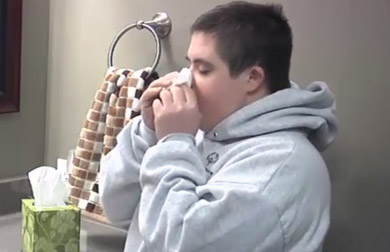 In Workplace Safety and Infection Control, DSPs will learn:
In Workplace Safety and Infection Control, DSPs will learn:
- A variety of ways to prevent and control the spread of germs that can lead to infection
- What happens when a person is exposed to body fluids that can cause infection.
- What to do if you are accidently exposed to a person’s blood.
- Valuable workplace safety tips.
- How to avoid common workplace accidents.
Refresher Articles and Videos: Year 2 and beyond
1. Do No Harm
- Who is Considered Vulnerable?
- Defining Maltreatment
- Who Commits Maltreatment?
- Video: Institutions to Independence
- Who are Mandated Reporters?
- 3R’s of a Mandated Reporter
- What is Abuse?
- Abuse Statistics & Warning Signs
- Exercise: Is this Abuse?
- What is Neglect?
- Types of Neglect
- Exercise: Is this Neglect?
- What is Exploitation?
- Exercise: Is this Exploitation?
- Trouble with Gifts
- Accidents Happen
- Documenting Maltreatment
- Maltreatment Best Practices
- Reporting and Investigation
- Please Don’t Tell
2. Providing Person-Centered Planning
- Poem: “You and I”
- How Would You Feel?
- Exercise: Learn from the Best
- Person-First Language
- The Rights of People Receiving Services
- The Importance of Choice
- The Dignity of Risk
- Person-Centered Planning & Services
- What Should a Plan Cover?
- Who Should be Involved in Developing a Person-Centered Plan?
- Who Benefits?
- Exercise: Who’s the Boss?
- Person-Centered Concepts
- PCP vs. Service Planning
- Exercise: Case Study
- Did You Know, PCP…
- Needs Assessments and PCP
- Understanding Service Limits
- Non-Verbal Communications
- Tips for Focusing on the Person
3. What to Do in an Emergency
- STAR Performance
- When to Call 911
- How to Make an Effective 911
- Exercise: You Make the 911 Call
- Leading Causes of Death
- Responding to Injuries
- Responding to Aggression
- Responding to a Mental Health Crisis
- When Someone is Missing
- Exercise: Missing Person
- Responding to Emergencies
- In Case of Fire
- Carbon Monoxide or Gas Leak
- Poisoning and Chemical Exposure
- Exercise: Responding to Poisoning
- Severe Weather
- Types of Weather Emergencies
- Natural Disasters
- Terrorism Threats
- Exercise: Responding to Severe Weather
4. Rights and Responsibilities
- What is Data Privacy?
- HIPAA
- HIPAA Privacy Rules
- Your Rights
- Your Responsibilities
- Tips for Establishing Boundaries
- Rights of the People You Serve – Part 1
- Reporting HIPAA Violations
- The Right to Make Choices
- The Right to Be Treated with Respect
- The Right to Be Safe
- The Right to Privacy
- Rights of the People You Serve – Part 2
- The Right to Participate
- The Right to Communications Access
- The Right to Personal Property
- The Right to Register a Complaint
- Rights of the People You Serve – Part 3
- Creative Problem-Solving
5. Medication Basics
- Know Your Responsibilities
- HIPAA Reminder
- Medication Forms and Types
- Do You Know the “Right” Way?
- Reading Labels: Over-the-Counter
- Over-the-Counter Medication Tips
- Reading Labels: Prescriptions
- Prescription Medication Tips
- Side Effects
- Tips for Managing Common Side Effects
- Medication Danger Signs!
- The 4 R’s
- Useful Medication Tools
- Do You Know the Dose?
- Right to Refuse Medication
- When NOT to Take a Medication & Disposal
- Exercise: Your Turn!
- Do You Document?
- Safe Storage
- If You Suspect Drug Abuse
- Where to Go for Medication Help
6. Ensuring Wellness, Health and Safety
- What is Wellness?
- Perspectives on Wellness
- The Power of Observation
- Doing the “Right” Thing
- A Matter of Choice
- Safe and Secure
- Improving & Maintaining Health
- A Healthy Diet
- Tips for Healthy Meals
- Food Safety
- Did You Know, Sleep is…
- Get Moving!
- Hygiene and Grooming
- Appointments and Follow-Up
- Systems and Symptoms
- If You Suspect Illness
- The Right to Refuse
- Documentation and Reporting
7. CPR and First Aid Basics
- How to Do CPR (for Teens & Adults Only)
- How to Help a Choking Person
- Signs and Symptoms of Heart Attack
- How to Operate an AED
- How to Do Basic First Aid
- Frequent Emergency Medical Problems
8. Preventing Insurance Waste, Abuse and Fraud
- Public Health Insurance
- Medicaid & CHIP
- Medicare
- Other Insurance Providers
- Insurance Waste, Abuse and Fraud
- Important Laws
- Whistleblower Protections
- Legal Consequences
- Who Could Be Involved in Fraud?
- Health Care Fraud
- Health Care Waste
- Health Care Abuse
- Apply What You’ve Learned About Insurance
- Exercise – Can You Spot Fraud?
- Tips for Preventing Waste, Abuse and Fraud
- If You Suspect Fraud
9. Importance of Documentation
- How Documentation Is Used
- Consequences of Improper Documentation
- What is Documentation?
- Common Types of Documentation
- Documentation Tips
10. Workplace Safety and Infection Control
- Workplace Safety
- Infection and Disease
- How Inspection Spreads
- The Infectious Process
- The Role of Vaccines
- Infection Precautions
- Proper Hand Hygiene
- Personal Protective Equipment & Barriers
- Tips for Preventing Spread of Germs
- Accidental Exposure
- Five Worst Germ Offenders
- Cleaning Techniques
- Using Bleach to Disinfect
- Slips, Trips and Falls
- Now You’re Cooking
- Preventing Strains & Injuries
- Driving Safely
- Detecting Hazards
- Worker Rights for Injuries
Mental Health Article Library: Seasoned DSPs
1. Overview of Mental Wellness and DSP Role
- Understand differing roles and types of DSP’s who support people with mental illness.
- Identify the key mental health service systems.
- Review the importance of your role in observing behavior, supporting self-determination and providing positive support for people with mental illness.
- Recognize common discriminations and stigmas impacting people with mental illness.
- Identify characteristics of possible maltreatment and rights violations.
- Be empowered to advocate and protect the rights of people with mental illnesses through your role.
Articles
- Mental-Emotional Health
- Types of DSP’s
- Key Systems for Mental Health
- Observing Mental Health Behavior
- Mental Health Self-Determination
- Positive Support for Mental Wellness
- Mental Health Stigma & Discrimination
- Characteristics of Good Mental Health
- Mental Health Maltreatment
- Rights Violations for Mental Illness
- Overcoming Mental Health Behaviors
- References: Overview of Mental Wellness and DSP Role
2. Mental Health System Issues
In Mental Health System Issues, DSPs will:
- Learn about mental health, who is impacted and the availability of timely and adequate care.
- Identify how direct support professionals (DSP’s) can advocate for and support a person with a mental illness.
- Understand system issues and recommendations that impact the quality and access of care for people with mental illness.
- Consider the importance of early prevention and identification of mental health issues.
Articles
- What is Mental Health?
- Who Is Impacted by Mental Health?
- DSP Role in Mental Health
- Disability Status
- More Mental Health Statistics
- System Issues & Improving Services
- SEL Education
- References: Mental Health System Issues
3. Mental Illness Definitions & Contributing Factors
In Mental Illness Definitions & Contributing Factors, DSPs will:
- Learn the definitions, signs and biology of mental health and illness.
- Gain understanding of how adverse childhood experiences, trauma, post-traumatic stress disorder and environmental triggers are factors in mental health and illness.
- Recognize the relationship between substance use disorders and mental illness, including treatment options.
- Consider support needs for those living with mental illness.
Articles
- Defining Mental Health & Illness
- Signs of Mental Illness
- Biology of Mental Illness
- Adverse Childhood Experiences, Trauma & PTSD
- Environmental Triggers Impacting Mental Health
- Substance Use Disorders
- Treatment for Substance Use Disorder & Mental Illness
- Co-occurring Disorders
- Support Needs for Those Living with Mental Illness
- References: Mental Illness Definitions & Contributing Factors
4. Mental Health Diagnosis Process
In Mental Health Diagnosis Process, DSPs will:
- Learn what information needs to be gathered to support someone in the mental health diagnosis process.
- Understand how you can support and advocate for someone navigating a mental health diagnosis process.
- Gathering Information for Mental Health
Articles
- Diagnosis Support Considerations for Mental Health
- Anosognosia
- Role of Family Member Caregivers Supporting Mental Health
- Mental Health Support Tips
- References: Mental Health Diagnosis Process
5. Factors Influencing Mental Health Diagnosis & Treatment
In Factors Influencing Mental Health Diagnosis & Treatment, DSPs will:
- Learn about historical views and treatments for mental illness and how this has impacted care and approaches to current day.
- Learn about identity and cultural factors that influence attitudes and beliefs about mental illness.
- Understand the prevalence of mental illness in subpopulations, as well as strengths and factors influencing diagnosis and treatment.
- Reflect on how your identity and cultural upbringing may influence your care of someone living with a mental illness.
Articles
- Defining Cultural Factors Influencing Mental Health
- Indigenous / Native American / American Indian / Alaska Native
- Historical Europe
- African and African Americans
- Historical USA Treatments
- Hispanic / Latino / Latinx
- Asian American, Pacific Islanders & Native Hawaiians (AAPI)
- Lesbian, Gay, Bisexual, Transgender, Queer, Intersexed (LGBTQI)
- Rural and Remote
- People with Disabilities
- Reflect – Your Identity
- References: Factors Influencing Mental Health Diagnosis & Treatment
6. Overview of Common Mental Illnesses
In Overview of Common Mental Illnesses, DSPs will:
- Learn about common mental illnesses, including who is impacted, basic symptoms, treatments and management.
- Recognize that developmental disorders may co-occur with mental illness.
Articles
- Depression
- Bipolar Disorder
- Dementia
- Anxiety Disorders
- Personality Disorders
- Schizophrenia
- Developmental Disorders
- References: Overview of Common Mental Illnesses
7. Treatment & Service Options for Mental Illness
In Treatment & Service Options for Mental Illness, DSPs will learn:
- Objective 1
- Objective 2
- Objective 3
- Objective 4
- Objective 5
Articles
- Evidence-Based Practices
- Trauma Informed Care
- Person-Centered Approaches for Mental Health
- Culturally Competent Care for Mental Health
- Integrated or Coordinated Treatment & Support
- Types of Psychotherapy
- DSP Role In Wellness
- Alternative Therapies for Mental Health
- Importance of Supported Employment for Mental Health
- Housing Initiatives to Improve Mental Health
- Mental Health Insurance
- Mental Health Plans
- References: Treatment & Service Options for Mental Illness
8. Responses to Mental Health Crisis and De-escalation Techniques
In Responses to Mental Health Crisis and De-escalation Techniques, DSPs will:
- Understand warning signs of a mental health crisis.
- Identity a range of helpful responses to mental illnesses and crisis (de-escalation techniques).
- Identify intervention & service options available to support people experiencing a mental health crisis.
- Learn strategies that can help prevent a crisis.
Articles
- Warning Signs of Mental Health Crisis
- Assessing the Mental Health Crisis
- Mental Health De-Escalation Techniques
- Mental Health De-Escalation Scenarios
- Mental Health Crisis Support Resources
- Calling 911 Due to Mental Health Crisis
- Transitioning the Mental Health Crisis
- Emergency Room for Mental Health Crisis
- Law Enforcement Considerations for Mental Health
- Mental Health Crisis Stabilization & Treatment Options
- After a Mental Health Crisis
- Mental Health Crisis Plans
- Recognizing Triggers Impacting Mental Health
- Psychiatric Advance Directives (PAD)
- Power of Attorney
- Routines & Habits to Improve Mental Health
- References: Responses to Mental Health Crisis and De-escalation Techniques
9. Suicide Awareness
In Suicide Awareness, DSPs will learn:
- Risk factors
- Warning signs
- Intervention and prevention strategies
Articles
- Suicide Statistics
- Factors of Suicide
- Warning Signs of Suicide
- Suicide De-escalation Scenarios
- Suicide Prevention Strategies
- Suicide Protective Factors
- Self-Harm
- Assessing Suicide Risk
- Coping After Suicide
- References: Suicide Awareness
10. Overview of Psychotropic Medications
In Overview of Psychotropic Medications, DSPs will learn:
- Common classes of psychotropic medications and how they work.
- Best practices in medication support.
- Common or serious side effects to be aware of.
- Tips for responding to medication refusal.
Articles
- Psychotropic Medication Facts
- Physicians Prescribing Psychotropic Medications
- Factors Impacting Psychotropic Medication Effectiveness
- Symptoms Treated by Psychotropic Medication
- Adverse Reactions & Medication Changes
- Side Effects of Psychotropic Medications
- Psychotropic Medication Management Support
- Group Setting Medication Management
- Evaluating Bias and Beliefs Regarding Medications
- Medication Considerations & Risks
- Medication Interaction Concerns
- Medication Classes & Usages: Antipsychotic
- Medication Classes & Usages: Antidepressants
- Medication Classes & Usages: Mood Stabilizers
- Medication Classes & Usages: Anti-Anxiety
- Medication Classes & Usages: Stimulants or Norepinephrine Reuptake Inhibitors (NRI)
- Medication Functional Assessment
- Problem Solving Medication Refusal
- Medication Holistic Approach
- Psychotropic Medicine Scenarios
- Medication Positive Support
- References: Overview of Psychotropic Medications
11. Strategies for Supporting People Living with Mental Illness
In Strategies for Supporting People Living with Mental Illness, you will learn:
- Communication and listening strategies.
- Positive Behavior Support strategies and techniques.
- How to effectively and positively set and respect boundaries.
Articles
- Basic Goals of Mental Illnesses
- Trauma Informed Care for Mental Illnesses
- Communication Do’s and Don’ts for Mental Illnesses
- Mental Illness Active Listening
- Observing Behaviors of Mental Illnesses
- Challenging Behaviors of Mental Illnesses
- Factors Affecting Behavior
- Adaptations for Cognitive Differences
- Positive Behavior Support (PBS)
- Positive Behavior Support Strategies
- Positive and Empowering Support
- Boundaries Overview
- Professional Boundaries
- Personal Boundaries
- Scenarios: Crossing Boundaries
- Tips for Setting Boundaries
- Motivational Interviewing for Mental Illness
- Goal Setting for Mental Illnesses
- LEAP® Model
- Collaborative and Proactive Solutions (CPS)
- Best Practice Scenarios for Mental Illnesses
- References: Strategies for Supporting People Living with Mental Illness
12. Caregiver Self-Care
After completing Caregiver Self-Care, DSPs will be able to:
- Recognize burnout in yourself and others.
- Understand how stress affects you.
- Identify self-care strategies to maintain balance in your life and prevent or recover from burnout.
Articles
- Signs of Burnout or Compassion Fatigue
- Factors of Burnout and Compassion Fatigue
- Risks with Burnout and Compassion Fatigue
- Preventing or Responding to Burnout and Compassion Fatigue
- Recognizing Burnout
- Signs of Stress
- Self-Care Practices
- Self-Care Reflection
- References: Caregiver Self-Care
13. National and Community Resources for Mental Health and Illness
In National and Community Resources for Mental Health and Illness, DSPs will have the opportunity to:
- Familiarize yourself with national and community resources that are available to support mental health and illness.
- Explore web-based resources to practice locating information to answer common questions relating to mental health.
Articles
- Substance Abuse and Mental Health Services Administration (SAMHSA)
- Center for Disease Control and Prevention (CDC)
- National Alliance on Mental Health (NAMI)
- National Institute of Mental Health (NIH)
- U.S. Department of Education
- U.S. Department of Health and Human Services (HHS)
- Community Resources
- References: National and Community Resources for Mental Health and Illness
Compliance with State of MN Statutes 245A and 245D
|
Statute # |
Topic |
Statute Language |
Caring for LIFE Course |
Course Learning Targets (Competencies) |
How Learner Will Engage with Competency(s) |
|
Maltreatment Reporting |
The license holder shall ensure that each new mandated reporter, as defined in section 626.5572, subdivision 16, who is under the control of the license holder, receives an orientation within 72 hours of first providing direct contact services as defined in section 245C.02, subdivision 11, to a vulnerable adult and annually thereafter. The orientation and annual review shall inform the mandated reporters of the reporting requirements and definitions in sections 626.557 and 626.5572, the requirements of this section, the license holder’s program abuse prevention plan, and all internal policies and procedures related to the prevention and reporting of maltreatment of individuals receiving services. |
Course 1: Do No Harm Topic 4: Why is This Important Topic 6: Who Are Mandated Reporters? Topic 7: Pop Quiz Topic 8: Definitions of Maltreatment Topic 10: Pop Quiz Topic 11: What is Abuse? Topic 12: Exercise: Is this Abuse? Topic 13: What is Neglect? Topic 14: Exercise: Is this Neglect? Topic 15: What is Exploitation? Topic 16: Exercise: Is this Exploitation? Topic 19: Documenting Maltreatment Topic 20: Maltreatment Best Practices Topic 21: Reporting & Investigation Topic 23: Pop Quiz |
|
|
|
|
Abuse Prevention Plans |
Subd. 2. Abuse prevention plans. All license holders shall establish and enforce ongoing written program abuse prevention plans and individual abuse prevention plans as required under section 626.557, subdivision 14. |
Course 1: Do No Harm Topic 8: Definitions of Maltreatment Topic 9: Did you know? Topic 11: What is Abuse? Topic 12: Exercise: Is this Abuse? Topic 13: What is Neglect? Topic 15: What is Exploitation? Topic 16: Exercise: Is this Exploitation? |
|||
|
Vulnerable Adult Definition |
Subd. 1a. Determination of vulnerable adult status. (a) A license holder that provides services to adults who are excluded from the definition of vulnerable adult under section 626.5572, subdivision 21, paragraph (a), clause (2), must determine whether the person is a vulnerable adult under section 626.5572, subdivision 21, paragraph (a), clause (4). This determination must be made within 24 hours |
Course 1: Do No Harm Topic 3: Who is Considered Vulnerable Topic 4: Why Is This Important? Topic 7: Pop Quiz |
|
|
|
|
Education Requirements |
Subd. 9e.Education requirements. E. (a) The commissioners of health, human services, and public safety shall cooperate in the development of a joint program for education of lead investigative agency investigators in the appropriate techniques for investigation of complaints of maltreatment. This program must be developed by July 1, 1996. See Statute for specific requirements. |
Course 1: Do No Harm Topic 4: Why is This Important? Topic 6: Who Are Mandated Reporters? Topic 7: Pop Quiz; Topic 8: Definitions of Maltreatment Topic 10: Pop Quiz Topic 11: What is Abuse? Topic 12: Exercise: Is this Abuse? Topic 13: What is Neglect? Topic 14: Exercise: Is this Neglect? Topic 15: What is Exploitation? Topic 16: Exercise: Is this Exploitation? Topic 19: Documenting Maltreatment Topic 20: Maltreatment Best Practices Topic 21: Reporting & Investigation Topic 23: Pop Quiz |
|
|
|
|
245D.05 HEALTH SERVICES |
Medication Basics |
Subd. 2. Medication administration. Subd. 4. Reviewing and reporting medication and treatment issues. Subd. 5. Injectable medications. |
Course 8: Medication Basics Topic 3: Know Your Responsibilities (Medication assistance vs. Administration) Topic 6: Do You know the “Right Way” (FDA & drug labels) Topic 8: Reading Labels: Prescriptions Topic 9: Side Effects Topic 10: Danger Signs (allergic reactions, overdose, interaction) Topic 11: The 4R’s Topic 12: Pop Quiz Topic 13: Useful Tools Topic 14: Do You Know the Dose? Topic 15: Right to Refuse Medication Topic 16: When NOT to Take Medication Topic 17: Exercise Topic 18: Pop Quiz Topic 19: Do you Document? Topic 20: Safe Storage and Disposal Topic 21: If you Suspect Drug Abuse Topic 22: Where to Go for Help Topic 23: Pop Quiz |
|
|
|
245D.06 PROTECTION STANDARDS |
Subdivision 1. Incident response and reporting |
Subdivision 1. Incident response and reporting; Subd. 2. Environment and safety. Subd. 4. Funds and property; legal representative restrictions; Subd. 5. Prohibited procedures.; Subd. 6. Restricted procedures. ; Subd. 7. Permitted actions and procedures; Subd. 8. Positive support transition plan. |
Course 1: Do No Harm (see Maltreatment Reporting) Course 2: What To Do In An Emergency (all topics) Course 3: Workplace Safety and Infection Control (all topics) |
See Course 1: Topic on Maltreatment Reporting Course 2:
Course 3:
|
See Course 1: Topic on Maltreatment Reporting Course 2:
Course 3:
|
|
Emergency Use of Manual Restraints |
Standards, Conditions and Reporting use of Manual Restraints |
Currently under construction |
|||
|
Service Planning and Delivery |
Subd. 1a. Person-centered planning and service delivery. (a) The license holder must provide services in response to the person’s identified needs, interests, preferences, and desired outcomes as specified in the coordinated service and support plan and the coordinated service and support plan addendum, and in compliance with the requirements of this chapter. License holders providing intensive support services must also provide outcome-based services according to the requirements in section 245D.071. |
Course 6: Providing Person Centered Planning (all topics) |
Course 6: Providing Person Centered Planning:
|
Course 6: Providing Person Centered Planning:
|
|
|
Program Coordination, Evaluation, and Oversight |
Subdivision 1. Program coordination and evaluation. Subd. 2. Coordination and evaluation of individual service delivery. Subd. 3. Program management and oversight. |
||||
|
Intervention Services |
Subd. 2.Positive support professional qualifications |
Currently under construction |
|||
|
Record Requirements |
Record Keeping Systems and requirements |
Course 8: Medication Basics Topic 15: Right to Refuse Topic 19: Do You Document? Topic 21: If You Suspect Drug Abuse Course 4: Rights & Responsibilities (all topics) Course 7: Why Must I Document? (all topics) |
See Course 8: Medication Basics Course 4: Rights & Responsibilities:
Course 7: Why Must I Document?:
|
See Course 8: Medication Basics Course 4: Rights & Responsibilities:
Course 7: Why Must I Document?:
|
|
|
Policies and Procedures; Intensive Support Services |
Subd. 2.Health and welfare. The license holder must establish policies and procedures that promote health and welfare by ensuring… Medication Handling, Data Privacy, HIPPA Admission Criteria, Emergency Response |
Course 8, Medication Basics Course 2: What to Do in an Emergency Course 3: Workplace Safety & Infection Control Course 5: Preventing Insurance Waste, Abuse & Fraud Course 9: Ensuring Wellness, Health & Safety Course 10: First Aid & CPR Basics |
See Course 8: Medication Basics See Course 2: What to Do in an Emergency See Course 3: Workplace Safety & Infection Control See Course 4: Rights & Responsibilities;
Course 9: Ensuring Wellness, Health & Safety:
Course 10: First Aid & CPR Basics:
|
See Course 8: Medication Basics See Course 2: What to Do in an Emergency See Course 3: Workplace Safety & Infection Control See Course 4: Rights & Responsibilities; Course 5: Preventing Insurance Waste, Abuse & Fraud:
Course 10: First Aid & CPR Basics:
|
|
|
Adult Mental Health Certification Standards |
Subd. 6a. Adult foster care homes or community residential settings serving people with mental illness; certification. all staff working in the adult foster care home or community residential setting have received at least seven hours of annual training under paragraph (c) covering all of the following topics: (i) mental health diagnoses; (ii) mental health crisis response and de-escalation techniques; (iii) recovery from mental illness; (iv) treatment options including evidence-based practices; (v) medications and their side effects; (vi) suicide intervention, identifying suicide warning signs, and appropriate responses; (vii) co-occurring substance abuse and health conditions; and (viii) community resources; |
Course 8: Medication Basics Course 10: First Aid and CPR Basics Mental Wellness is currently under construction |
See Course 8: Medication Basics See Course 10: First Aid & CPR Basics |
See Course 8: Medication Basics See Course 10: First Aid & CPR Basics |
